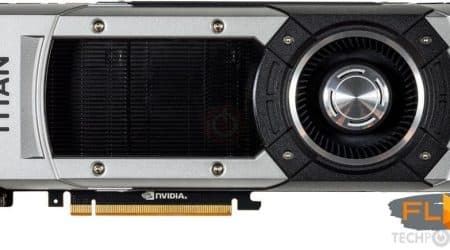Engaging with digital resources often requires a straightforward approach to access various applications designed to enhance functionality and user experience. Among these resources, disk images provide a versatile means of distribution, enabling users to obtain and utilize advanced tools efficiently. Understanding the process of working with these images opens the door to a plethora of possibilities for both novice and expert users alike.
Venturing into the realm of virtual installations can initially seem daunting, especially for those unfamiliar with the intricacies of accessing packaged tools. However, with the right guidance and steps, this can become a seamless experience, ensuring that individuals can leverage cutting-edge capabilities without unnecessary complications. Embracing the art of utilizing these digital containers significantly streamlines the transition to enhanced functionality.
As technology continues to advance, the methods of retrieving and utilizing applications have evolved accordingly. Familiarizing oneself with the procedures surrounding disk images not only simplifies the process but also empowers users to make informed decisions in their digital endeavors. By adopting a methodical approach, users can swiftly harness the potential of the resources at their disposal.
Understanding ISO Files and Their Purpose
In the digital age, the manner in which we distribute and access data has evolved. One of the most reliable formats for packaging information in a cohesive manner is a specific type of archive. This format allows for the encapsulation of all necessary components into a single entity, ensuring integrity and consistency during transfers or duplications.
Such archives serve various roles, particularly in the realm of applications and operating systems. They enable users to create exact replicas of original media, facilitating easier distribution and access on diverse platforms. Through the use of this format, the complexities involved in the installation or execution of applications are significantly mitigated.
| Characteristic | Description |
|---|---|
| Standardized Format | This type of archive follows a widely recognized structure, allowing compatibility across different systems. |
| Data Integrity | Encapsulation ensures that the contents remain unchanged, preserving the features and performance of the original data. |
| Ease of Transfer | Reducing the number of files to a single entity simplifies sharing and downloading processes. |
| Multi-Platform Use | This format can be utilized on various operating systems, making it versatile for users worldwide. |
Tools Required for ISO Installation
To successfully carry out the process of utilizing an image for deployment, a few essential tools will significantly simplify the task. These resources provide the necessary functionalities to manage and execute the images efficiently. Below is a list of crucial components needed to achieve your objective.
- Disk Imaging Software: This type of tool is designed to manipulate images, allowing users to create, modify, or extract files from them. Popular options include:
- Rufus
- Etcher
- PowerISO
- Virtual Drive Software: This utility enables the mounting of image files as virtual drives, making it possible to access them without burning to physical media. Examples include:
- Daemon Tools
- WinCDEmu
- Virtual CloneDrive
- Bootable USB Creator: For creating bootable USB sticks, these applications streamline the process, ensuring compatibility and functionality. Notable tools include:
- UNetbootin
- Universal USB Installer
- YUMI
Having these tools at hand will facilitate a smoother experience and ensure that the necessary steps are completed without unnecessary hurdles. Choose the appropriate options based on your specific requirements and preferences to ensure a successful outcome.
Steps for Mounting an ISO File
Utilizing an image can be essential for accessing digital content conveniently. The process involves creating a virtual drive that allows you to interact with the contents as if they were on a physical medium. This method is particularly useful for managing large datasets without the need for physical storage.
1. Choose the Right Tool
Select an appropriate application designed for mounting. Many operating systems offer built-in options, while others may require third-party utilities for enhanced functionality.
2. Locate the Image
Find the desired image on your system. Ensure that you know the path where it is saved for easy navigation.
3. Initiate the Mounting Process
Right-click on the image, and select the appropriate option from the context menu, or use the specified function within your chosen application. This action typically prompts the system to create a virtual drive.
4. Accessing the Mounted Content
Once the image is mounted, navigate to the newly created virtual drive. This drive will reflect the contents of the image, making it accessible for use.
5. Unmount When Finished
After completing your tasks, remember to unmount the image. This step ensures that resources are released and the virtual drive is no longer in use, preventing potential conflicts or disruptions.
How to Extract an ISO File
In many situations, users need to access the contents of a disk image to utilize its resources effectively. Extracting the data allows for direct usage without the need for mounting or burning. Several methods and tools are available that facilitate this process.
Here are some popular options to consider:
- Using built-in tools in operating systems:
- Windows 10 and later versions offer the capability to right-click the image and select the option to extract directly.
- Mac users can double-click the image, and the contents will open in Finder.
- Using dedicated extraction software:
- Programs like WinRAR or 7-Zip allow for quick extraction to specified directories.
- Other tools, such as PowerISO or UltraISO, provide extensive features for handling disk images.
Regardless of the method chosen, ensure to select a location for the extracted data that is easily accessible to enhance your workflow.
Setting Up the Installation Program
In this section, the focus will be on preparing your system to begin the setup of the desired application. Ensuring that all components are in place creates a smoother experience and minimizes potential setbacks during the execution of the installer. With the right approach, you’ll be ready to proceed with confidence.
Gather Necessary Tools
First, make sure you have the essential utilities at your disposal. This includes a reliable extraction tool that can handle the contents of the image. Selecting a well-reviewed application can prevent compatibility issues and ensure you have a seamless experience. Additionally, verify that your machine meets the minimum requirements specified by the creator to avoid unnecessary complications.
Prepare Your Environment
Next, create a dedicated folder to store the extracted contents. Organization plays a critical role in navigating through the various files later on. After extraction, explore the contents carefully, looking for the primary executable file that initiates the setup. If there are any instructions or readme files included, it’s advisable to review them for important information regarding the installation process.
Troubleshooting Common Installation Issues
During the setup process, users may encounter a variety of challenges that can hinder progress. Identifying and resolving these problems is crucial for a smooth experience. Whether it’s compatibility issues, missing components, or unexpected errors, understanding common pitfalls can significantly ease the journey.
Compatibility Problems: One of the frequent hurdles arises from discrepancies between the target system and the intended application. Ensure that your operating system meets the required specifications, including version and architecture.
Corrupted Downloads: If the image you obtained appears to behave incorrectly, it could be due to corruption during the download. Verifying checksums can confirm the integrity of the file before proceeding with any setup.
Permission Denials: Running setup tasks may require specific permissions. Encountering restrictions often calls for administrative rights. Right-clicking the executable and selecting the option to run as an administrator can often resolve this issue.
Mismatched Dependencies: Sometimes, essential components may fail to install due to missing dependencies or updates. Checking for required libraries or frameworks before beginning setup can save significant time and frustration.
Error Messages: Any error code or message displayed during the process should not be overlooked. Searching online for the specific code can lead to tailored solutions shared by others who faced similar challenges.
By staying informed and leveraging available resources, one can effectively navigate many of the common setbacks encountered during the setup journey.
Q&A: Install a software program from an iso file
How do I install software from an ISO file on Windows 11?
To install software from an ISO file on Windows 11, first, open File Explorer and find the ISO file you want to install. Right-click on the ISO file and select “Mount.” This will create a new virtual drive with a drive letter, just like inserting a physical CD or DVD. Open the newly created drive in Windows Explorer, locate the setup file (usually named “setup.exe”), and double-click it to run the installer. Follow the on-screen instructions to complete the installation. Once done, you can unmount the ISO by right-clicking on the virtual drive and choosing “Eject.”
What steps should I follow to install software from an ISO on Linux?
To install software from an ISO on Linux, start by mounting the ISO file. Open a terminal and create a mount point using a command like mkdir /mnt/iso. Then, mount the ISO file by running sudo mount -o loop /path/to/iso /mnt/iso, replacing /path/to/iso with the actual path to your ISO file. Once mounted, navigate to the mount point using a file explorer, find the setup file or installation script, and run it. Depending on the software, you might need to use specific commands to complete the installation process on your particular Linux distribution.
Can I install a program using an ISO file without burning it to a CD or DVD?
Yes, you can install a program using an ISO file without burning it to a CD or DVD. In Windows, you can simply right-click on the ISO file and select “Mount” to create a virtual drive. This allows you to access the contents of the ISO as if it were a physical CD or DVD. Once the ISO is mounted, open File Explorer and navigate to the new drive letter. Run the setup file, such as “setup.exe,” and follow the on-screen instructions to install the software. After completing the installation, you can unmount the ISO.
How can I mount an ISO file in macOS to install software?
To mount an ISO file in macOS, simply double-click the ISO file, and it will automatically be mounted as a new drive in Finder. You can also right-click on the ISO file and select “Open With” > “DiskImageMounter” if needed. Once the ISO is mounted, navigate to the new drive and locate the setup file or installer, often in DMG format. Run the installer and follow the on-screen instructions to complete the installation. When you’re finished, you can eject the mounted ISO by right-clicking on the new drive in Finder and selecting “Eject.”
How do I install Windows 7 using an ISO image?
To install Windows 7 using an ISO image, you first need to create a bootable USB flash drive or burn the ISO file to a DVD. Use a tool like “Windows USB/DVD Download Tool” to burn the ISO to a USB flash drive or optical disc. After creating the bootable media, insert it into the computer and restart. Access the BIOS or boot menu to select the USB or DVD as the boot device. Follow the on-screen instructions for the software installation and choose the hard drive partition where you want to install Windows 7.
Can I open an ISO file in Windows 8.1 without burning it to a CD or DVD?
Yes, in Windows 8.1, you can open an ISO file without burning it to a CD or DVD. Simply right-click on the ISO file and select “Mount.” This creates a virtual CD drive with a new drive letter where you can access the contents of the ISO. Once mounted, you can open the file and run the setup program, such as an EXE file, to begin the software installation. When you’re done, unmount the ISO by right-clicking on the virtual CD and choosing “Eject.”
How do I burn an ISO image to a Blu-ray disc for large programs?
To burn an ISO image to a Blu-ray disc, use software like WinZip or any dedicated ISO burning tool. First, insert a blank Blu-ray disc into your Blu-ray burner. Open the burning tool and select the option to burn an ISO file. Choose the ISO image you want to burn and make sure the target drive is set to the Blu-ray burner. Start the burning process, and once it completes, you can use the Blu-ray disc to install large programs on another computer. The steps may vary depending on the software being used.
What should I know about using an ISO file in Windows or Mac to install software?
Using an ISO file in Windows or Mac involves mounting the ISO to a virtual CD drive or burning it to a storage device like a USB flash drive. On Windows, right-click the ISO and choose “Mount” to access the contents or use an external hard drive for larger installations. On macOS, double-click the ISO image to mount it automatically. The steps may vary depending on the OS version and software used, but once mounted, open the file and run the software installation from the ISO. Always ensure the ISO format is compatible with the operating system.





